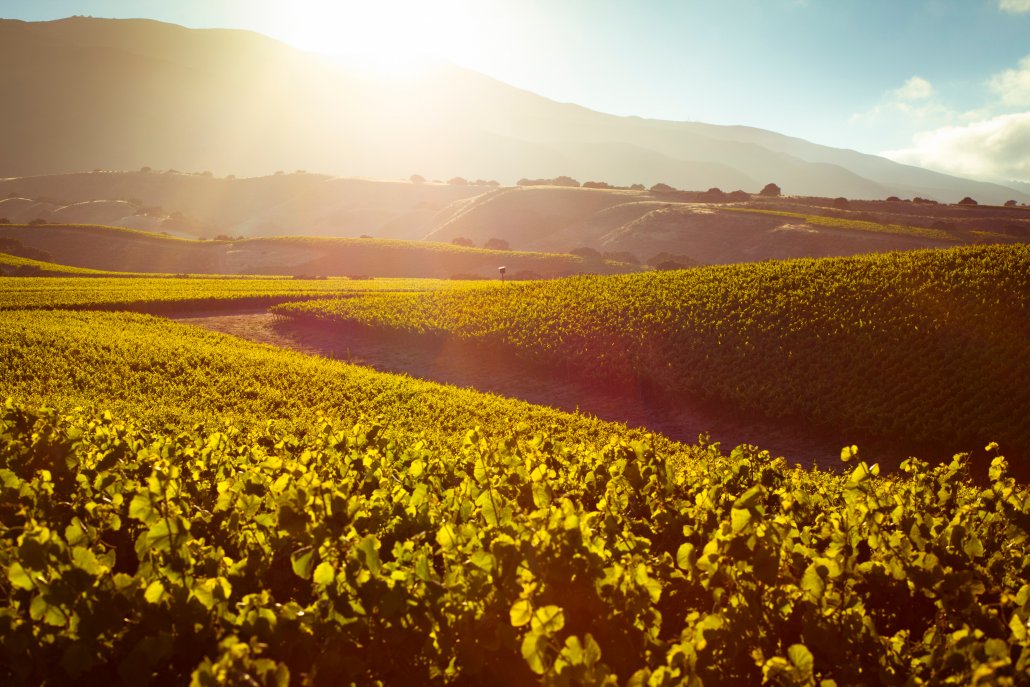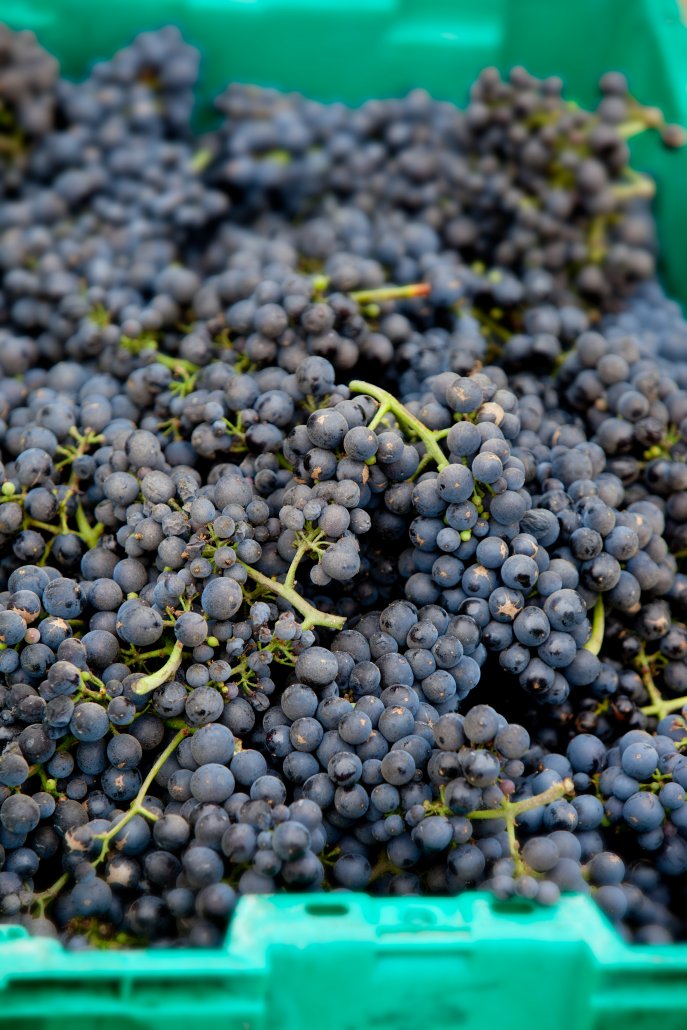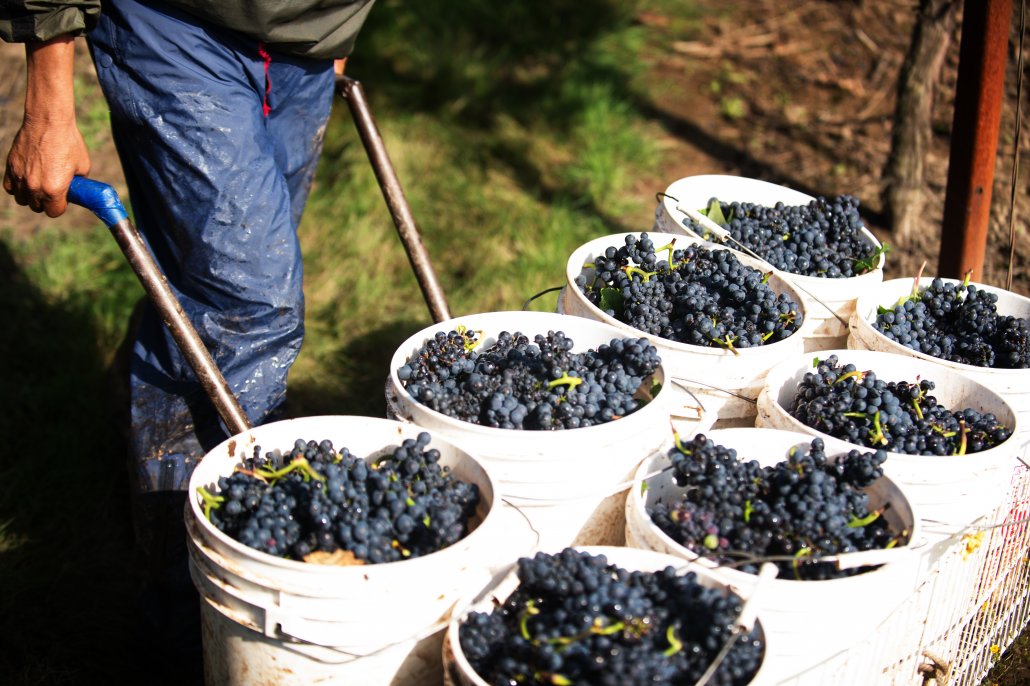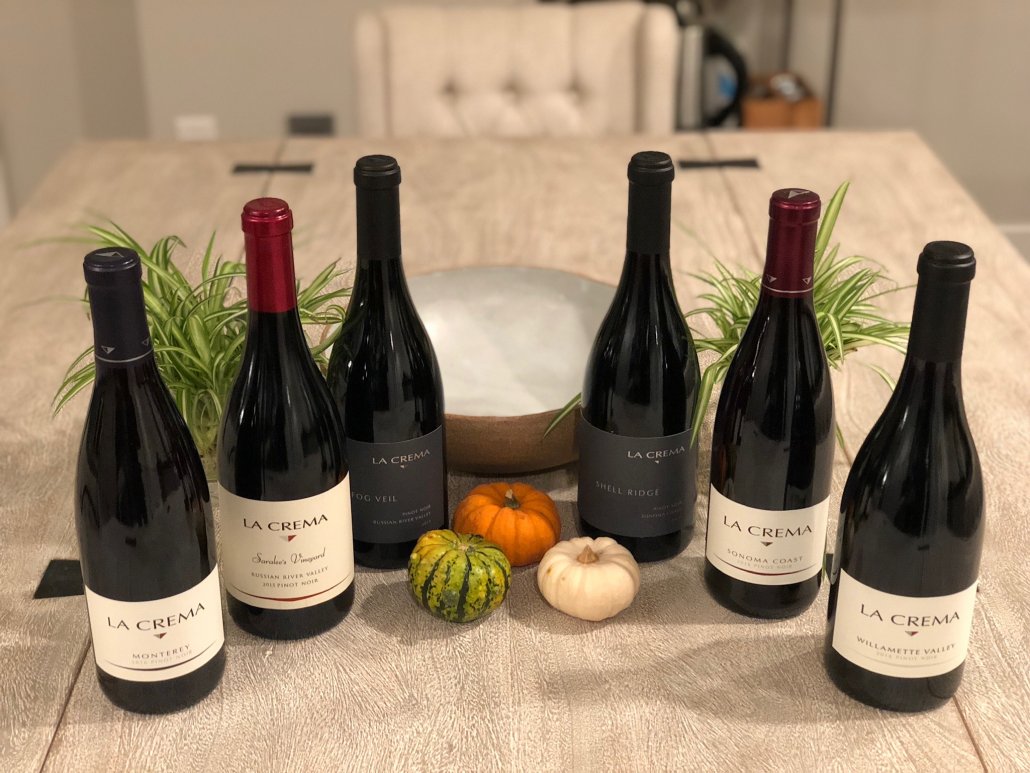The Complete Guide to Pinot Noir Grapes
Pinot Noir Grapes
Pinot Noir grapes are one of the most ancient varieties of domesticated vitis vinifera, the vine that makes the world’s most famous wine grapes.
Its first known mention of this red wine grape spelled as Pinot (Pineau was another common spelling) in literature dates back to a Burgundian text from 1375. This famous red wine grape previously was called Morillon, Noirien and Auvernat, and there’s a written reference to “Moreillon” (spelling varied greatly in those days) that dates back to 1283.
The red Pinot Noir grape is so old that it is the grandparent of Sauvignon Blanc and the great-grandparent of Cabernet Sauvignon. According to the tome Wine Grapes, Pinot Noir and the currently rarely cultivated Gouais Blanc created 21 known wine grape varieties – including the ever-popular Chardonnay, all of which occurred via spontaneous crossings that happened over time. However, we have no idea of Pinot Noir’s parentage so far.
The origin of Pinot Noir’s name also remains a mystery. It may have come from the shape of its grape clusters, which vaguely resemble a pinecone. The French call a pinecone an “apple of the pine”, or pomme de pin. The name could also come from a town or area where the grape used to grow. For example, in the center of France, there is a town called Pignols – referring to pine nuts – and the Pinot Noir grape has been grown there since the Middle Ages. Maybe one day we’ll know the true story.
PINOT NOIR GRAPES IN THE VINEYARD

Photo by Eric Wolfinger
Cistercian monks perfected the growing of the Pinot Noir grape variety in the Middle Ages after becoming fascinated by its ability to very clearly transmit terroir. (Terroir is a French word for growing conditions specific to a certain place, including soil, climate, altitude and aspect.) Pinot Noir is so transparent in its reflection of where it is grown that is rarely blended, unlike most other popular grapes such as Cabernet Sauvignon Merlot and Syrah.
This is despite the fact that Pinot Noir is challenging to grow well. It could easily be “helped” in difficult vintages by adding other juice, but most winemakers prefer to let their hair grow gray rather than to “taint” their precious Pinot Noir!
There are many reasons Pinot Noir wine grapes are finicky to grow. For starters, this red wine grape buds early in the growing season, making it susceptible to spring frosts (just like many of my garden plants). It also prefers cooler to temperate climates with just enough heat and sunshine.
In fact, Pinot Noir prefers sun to heat. This is one of the reasons that La Crema’s vineyards are so well-suited to Pinot Noir: many are usually shaded by fog from the Pacific Ocean throughout the morning. Too much sunshine will cause Pinot Noir’s thin skin to shrivel and even burn, both of which can produce less than desirable flavors.
On the other end of the spectrum, Pinot Noir’s thin skin poses problems in wet weather, too. Rain and standing water can promote rot and mildew, which can grow exponentially within Pinot Noir’s usually tight clusters. Sometimes, it can’t even be seen from the outside of the cluster. Also, hail can slice through sensitive Pinot Noir berry skins.
Finally, Pinot Noir yields are very low. After working so hard to take care of the vineyard, growers are rewarded only with small grape bunches carrying small berries. As Pinot Noir vines age, their yields only lower – the same with all grape vines as they age.
All of these factors come together to explain why Pinot Noir tends to be more expensive than other grape varieties. This is true even at a most basic wine quality level.
PINOT NOIR CLONES

Pinot Noir in Harvest Bins
Because Pinot Noir is so old, it has had ample time to naturally mutate into new clones. This single grape variety has more than 1,000 registered clones! Pinot Noir is also the original member of the Pinot family, which spawned the natural mutations of the commonly found Pinot Meunier, Pinot Gris/Grigio and Pinot Blanc.
A message about clones: don’t panic! A clone does not mean a grape vine comes from genetically modified material or that it has morphed into something harmful. This is not a grape-based version of creating Dolly the Sheep.
The English word clone is based on a Greek word for twig and refers to the practice of generating a new plant, genetically identical to its parent, by taking and propagating a cutting. Unlike many agricultural crops, vines self-pollinate. Hence, they tend to be the same year after year after year. However, the older the domesticated variety, the greater is its tendency to morph. Pinot Noir clones have myriad characteristics. They can range from growing characteristics, such as early ripening or loose clusters, to aroma and texture features, like darker fruit flavors and super fine tannins.
The diverse range of Pinot Noir clones available adds to the complexity of the Pinot red wine variety. Moreover, sometimes the clones are vinified and bottled separately; sometimes different clones are blended!
CERTIFIED SUSTAINABLE VINEYARDS AND WINERY

La Crema features Certified Sustainable Pinot Noir Grapes
La Crema’s vineyards and winery are Certified Sustainable by the California Sustainable Winegrowing Alliance. Everything is certified from grape to glass!
Metrics that are monitored include water and energy use as well as greenhouse gas emissions in both the vineyards and the winery. Nitrogen use in the vineyard is also carefully noted. La Crema is also SIP Certified – that’s “Sustainability in Practice.” This program’s focus is on the long-term health of the vineyards and their environments, as well as the people who work in them.
La Crema has created and applied many common sense initiatives to its business as well. Only green cleaning agents are used. Grape pomace (the seeds, stems and skins left after fermentation) is composted and reused in the vineyards. All winery water is recycled to use for vineyard and landscape irrigation. Habitat conservation around the vineyards provides biodiversity while nesting boxes provide homes for raptors and owls that keep the rodent population in check.
On a more ambitious level, various equipment manages and monitors energy use around the facilities. Tesla Energy’s Powerpack batteries help reduce La Crema’s electricity use from the grid, especially during peak periods. Also, a photovoltaic solar array fuels about 65% of the winery’s annual electricity usage.
LIFE CYCLE OF PINOT NOIR GRAPES
Grape vines are perennials that can live very, very long lives. However, they don’t produce fruit for the first few years. Most wineries do not even have a crop off a new grape vine until it reaches its third harvest.
The annual grape cycle begins in the winter, when the dead, wood material from the previous growing season is pruned, or cut off, the dormant vine. As temperatures warm, the “bleeding” of sap begins from the pruning wounds.
Next, buds appear on the vine then “break”, or open up. About four to six weeks later, the buds bloom, or flower, on the vine. These are called inflorescences. Amazingly, it takes only ten to 14 days for these pretty inflorescences to become itty-bitty grape clusters! From budding to fruit set, the season’s new crop is very vulnerable to everything from wind and frost to rain and hail, all of which can affect fruit set. This, in turn, can greatly lessen the year’s crop potential.
As the days get longer and – usually – warmer, the Pinot Noir grape vine edges toward veraison, which is the change in grape skin color. Once the color begins to change from near neon green to purple-blue, the seeds within the grape also begin to ripen.
At last, harvest arrives! The picking date depends on the Pinot Noir wine style desired. Earlier picked Pinot Noir grapes tend to have lighter color, more lively acidity, somewhat crunchier tannins and lower alcohol. Later picked grapes usually give more color and alcohol with smoother tannins and less noticeable acidity.
Once the fermented wines are aging in their tanks or in their barrels, the leaves on the vines light up in yellow, gold, orange and red. Eventually they fall, and the vine hibernates until the cycle starts all over again.
FOR THE LOVE OF PINOT NOIR GRAPES

Pinot Noir Being Such a Reflection of Terroir Necessitates a Large Pinot Noir Portfolio
Pinot Noir is such a dynamic grape that it demands attention from vine to glass. Though it isn’t easy to grow, it responds graciously to tender loving care. Careful attention to grape clone selection for specific sites and winemaking styles is a good start to developing the ideal Pinot Noir life cycle. Following on, sustainable growing and winemaking methods are the ideal way to cultivate the taste of Pinot Noir throughout the life cycle of the vine. When this philosophy is strategically applied, Pinot Noir ends up with a sense of place, or terroir. That, in sum, is the aim of all die-hard Pinot Noir winemakers!
Post by Christy Canterbury, Master of Wine





Comments